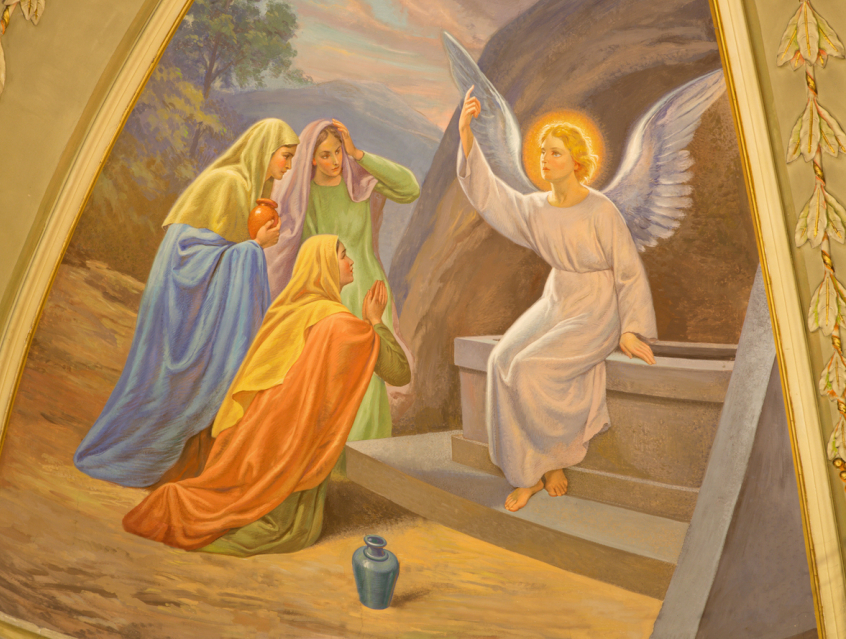
What's the group noun for Mary? Anyone who reads the New Testament may be baffled by the fact that almost every woman who surfaces in the gospel narratives is named Mary. From birth to the cross, Jesus' story can be mapped through his encounters with these women.
Some of these Marys hosted Jesus in their homes – others like Mary Magdalene left home behind to travel with him. And it is these women who are found closest to the heart of the passion narrative – standing close to Jesus as he dies, washing his wounds, performing his burial rites, and the first to see and tell of the resurrection.
In fact, within the Jesus movement and early church community, the name Mary is associated with five or six notable women. The leader of the pack must be Mary (or Mariamme in its biblical form) mother of Jesus, closely followed by Mary Magdalene; Mary sister of Martha; Mary mother of James and Joses (Mark 15:40), who may or may not be the same as Mary wife of Clopas (John 19:25); And finally, Mary, mother of John Mark (Acts 12:12).
For those wanting to retrieve the historical women behind these stories this maelstrom of Marys is difficult to navigate. To make matters even more confusing, the Marys have historically been conflated, misread and mixed up. Which story belongs to which Mary? And why is Mary such a popular name, anyway?
To solve the mystery of the Marys, we have to reconstruct a picture of first century Palestine. Studying the naming practices of a society opens up questions about how a community defines itself, what is given value in the culture and how daily life was experienced.
But name studies also allow us to situate a text more effectively in its context – names can rise and fall in popularity, or become definitive of an era or age group, allowing us to historically pinpoint the New Testament writings.
This is exactly what professor of Jewish Studies Tal Ilan does. Focussing on the Second Temple and Mishnaic Periods (that is, 330 BCE – 200 BC), Ilan conducted a statistical report of Jewish women's names in Palestine. The fascinating study gathered the remaining texts we have from this period around Jesus' life – the writings of the historian Josephus, tomb inscriptions and rabbinic literature – and compiled a database of all the names that are mentioned.
Her study revealed two important facts. Firstly, Ilan concluded from the data that within this period 47.7% of the entire female population bore two Hebrew names only: Salome and Mariamme (Mary). To illustrate this statistic, on a usual day in the marketplace every second woman you met would be called by one of these two names. This would suggest that the multiplicity of Marys featuring in the New Testament texts is not just a biblical phenomenon, but reflective of the naming patterns of the wider community at the time.
It follows that this could also be read as an argument for the historicity of the gospel narratives. If almost half of the women within Ilan's area of study were named Mary or Salome, it makes sense that the majority of the women we encounter in the Jesus movement follow this pattern.
But what is it about Mary? And Salome? How do we account for the ubiquity of these names? Perhaps their popularity had something to do with the celebrity naming trends of the time. Both names are associated with the Herodian royal family: Salome after Queen Salomezion Alexandra, and Mary after Mariamme the Hasmonean, King Herod's wife. This pattern is also reflected in the popularity of the five early Hasmonean names among the male statistics: John, Simon, Judas, Eleazar and Jonathan.
Secondly, it is impossible to read Ilan's study without also commenting on the huge discrimination against women shown in the surviving records: only 10.8% of the names mentioned in the texts refer to women. This is disappointing, considering it can safely be assumed that women, then as now, made up about 50% of the population.
Disappointing, but unsurprising. During the time period targeted by this study it was not mainstream for women to find themselves in historical writings and the structuring of society meant that often even in death the names of their male relatives would be listed instead of their own. There are of course exceptions to this rule (most of whom are named Mary) ...
If nothing else, this exploration into the Marys of the New Testament gives us a new contextual framework by which to understand these women. These were real people: deeply involved in the Jesus movement, defining members of the early church and against all the odds etching themselves in the New Testament texts. There's something about Mary, but it's not just her name – it's her story.













